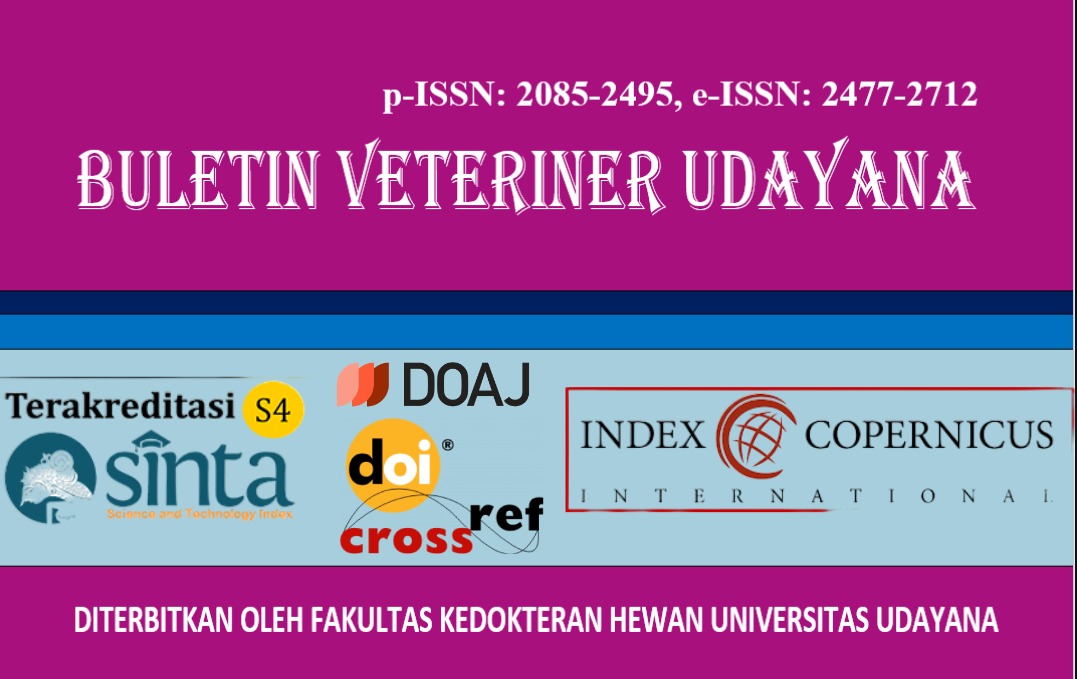MANAGEMENT OF INGUINAL HERNIA IN A DOMESTIC CAT
DOI:
https://doi.org/10.24843/bulvet.2025.v17.i03.p28Keywords:
Domestic cat, inguinal hernia, surgeryAbstract
Inguinal hernia is the protrusion of an organ, part of an organ, fat, or tissue through the inguinal ring, located between the groin and abdominal muscles. This case study aims to understand the diagnostic methods and management of inguinal hernia in a domestic cat. A three-month-old male domestic cat weighing 1 kg presented with a lump in the inguinal area. After clinical and radiographic examinations, the cat was diagnosed with an inguinal hernia with a favorable prognosis. Treatment was performed surgically using the herniorrhaphy technique to reposition the herniated contents into the abdominal cavity. Before surgery, the cat was given premedication with atropine (V-tropine® 0.02 mg/kg BW SC), followed by anesthesia using a combination of xylazine (xylazine® 1 mg/kg BW) and ketamine (ketamine® 11 mg/kg BW) intravenously. The surgical procedure involved repositioning the herniated contents and modifying the hernia ring to allow tissue adhesion. Layered suturing was performed using polyglycolic acid 3.0 for the peritoneum (simple interrupted pattern), catgut 3.0 for the subcutaneous layer (simple continuous pattern), and silk 2.0 for the skin (simple interrupted pattern). Postoperatively, the cat was administered cefotaxime (cefotaxime® 20 mg/kg BW q12h IM) for three days and tolfenamic acid (tolfedine® 4 mg/kg BW q24h IM) for four days, followed by cefixime (cefixime® 10 mg/kg BW q12h PO). On the eighth day, the cat was declared fully recovered with stable clinical conditions, good appetite, and normal urination and defecation. Surgical intervention using the herniorrhaphy technique proved effective in treating inguinal hernia in domestic cats, ensuring a fast recovery and a high success rate. Early diagnosis and prompt treatment are crucial to prevent serious complications, such as organ strangulation, which can lead to necrosis and systemic infection. Therefore, pet owners need to be more vigilant about the symptoms of inguinal hernia and promptly take their pets to a veterinarian for proper diagnosis and treatment




